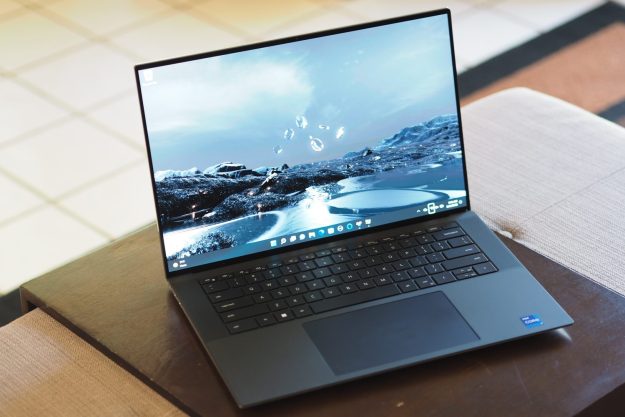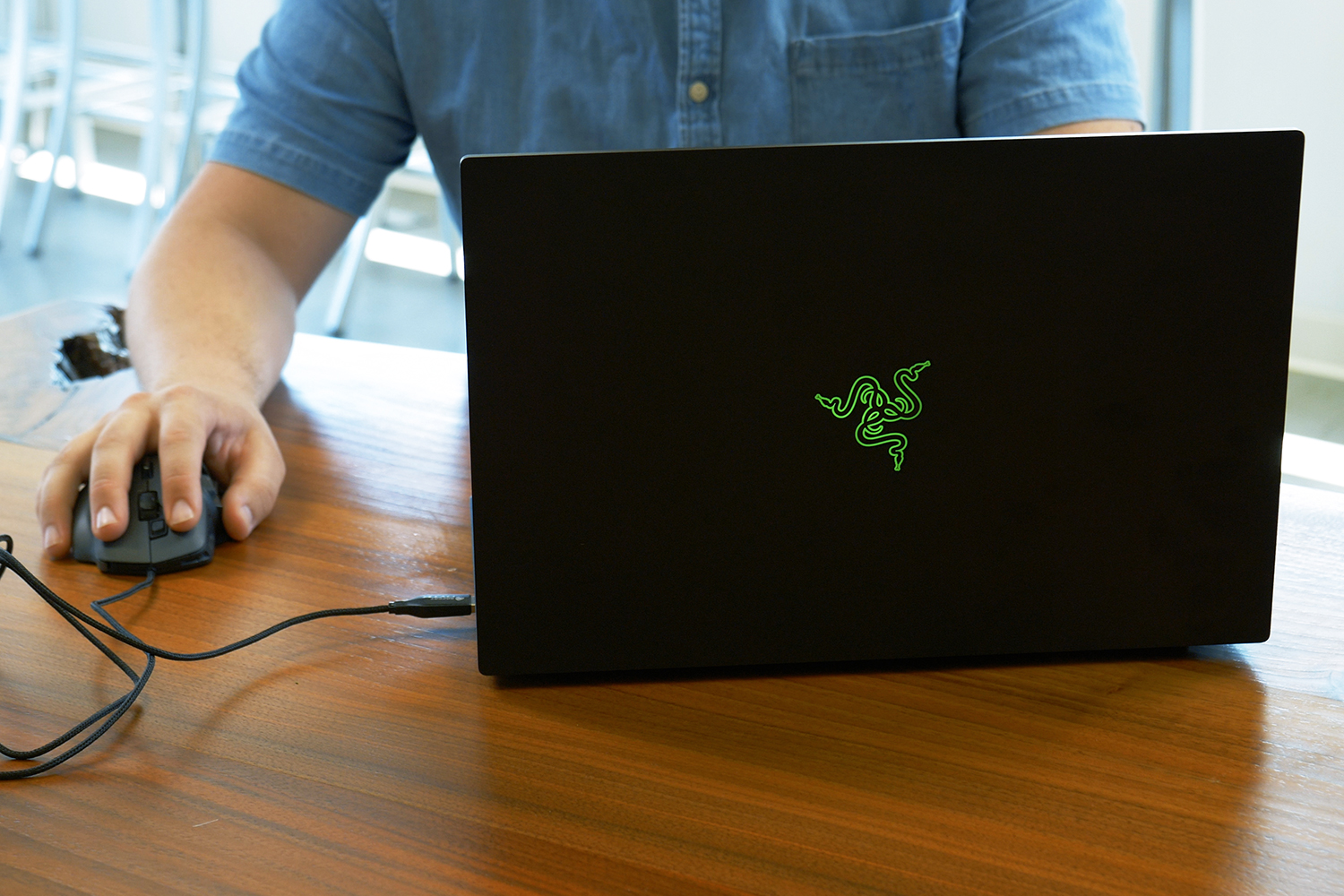
The notion of the gaming notebook has undergone some significant changes over the last several years. They’ve become thinner, lighter, and less flashy in their designs. In fact, with many powerful gaming notebooks looking a lot like more conservative business machines, you’d be comfortable carrying them into a conference room. And then some recent 2-in-1 machines aren’t built for gaming, but it sure seems like that’s one of their intended purposes.
Here, we’re comparing the newest Razer Blade 15, a decidedly dedicated gaming notebook, with Microsoft’s Surface Book 2 15 that builds in a gaming-like discrete GPU. Does Razer’s premier gaming machine beat out Microsoft’s pricey pretender?
Design
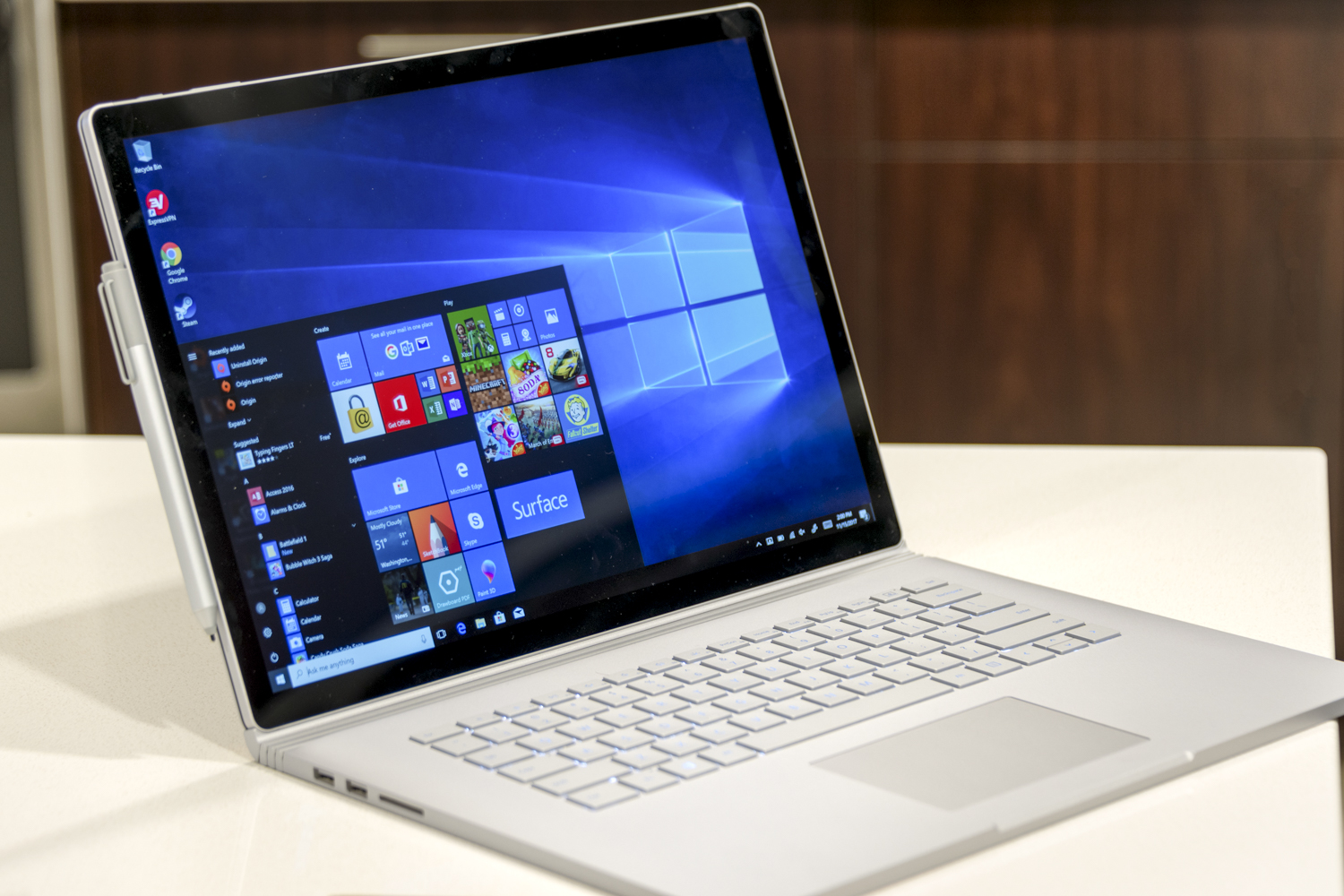
The new Razer Blade is a refined design that builds on what was best about the older Blade 14 and expands the display via thinner side bezels. It’s surprisingly thin at 0.66 inches and maintains a relatively svelte, all-aluminum chassis that weighs in at 4.5 pounds. That sounds like a lot until you consider the powerful components that are tucked away inside (more on that in the next section). The keyboard is excellent, with good key travel, RGB lighting, and even spacing, although we did balk at some layout issues. And the touchpad is a smooth version with Windows Precision touchpad support for reliable multitouch gestures. The aesthetic is attractive and sleek, managing to straddle the line between overt gamer and conservative businessperson.
Microsoft’s Surface Book 2 is an entirely different kind of machine. Its design is thoroughly innovative, sporting a tear-off display that contains the main PC components and that can serve as a standalone, thin and light tablet for inking and swiping. Aesthetically, it’s a perfect fit within Microsoft’s Surface lineup, enjoying a thoroughly modern look thanks to its silver-grey magnesium chassis. Just like the Razer Blade 15, it exudes quality. It’s also a little thick (0.90 inches along the rear thanks to its “fulcrum hinge” that’s designed to balance the PC components that weigh down the display), and it’s also almost as heavy as the Razer Blade 15 at 4.2 pounds. It also has larger side bezels, which makes it look a bit outdated.
Both machines are solidly built and look great. The Surface Book 2 gets the nod for sheer design acumen thanks to its flexibility — it’s as good a tablet as it is a notebook, making the Razer Blade a one-trick pony by comparison.
Performance
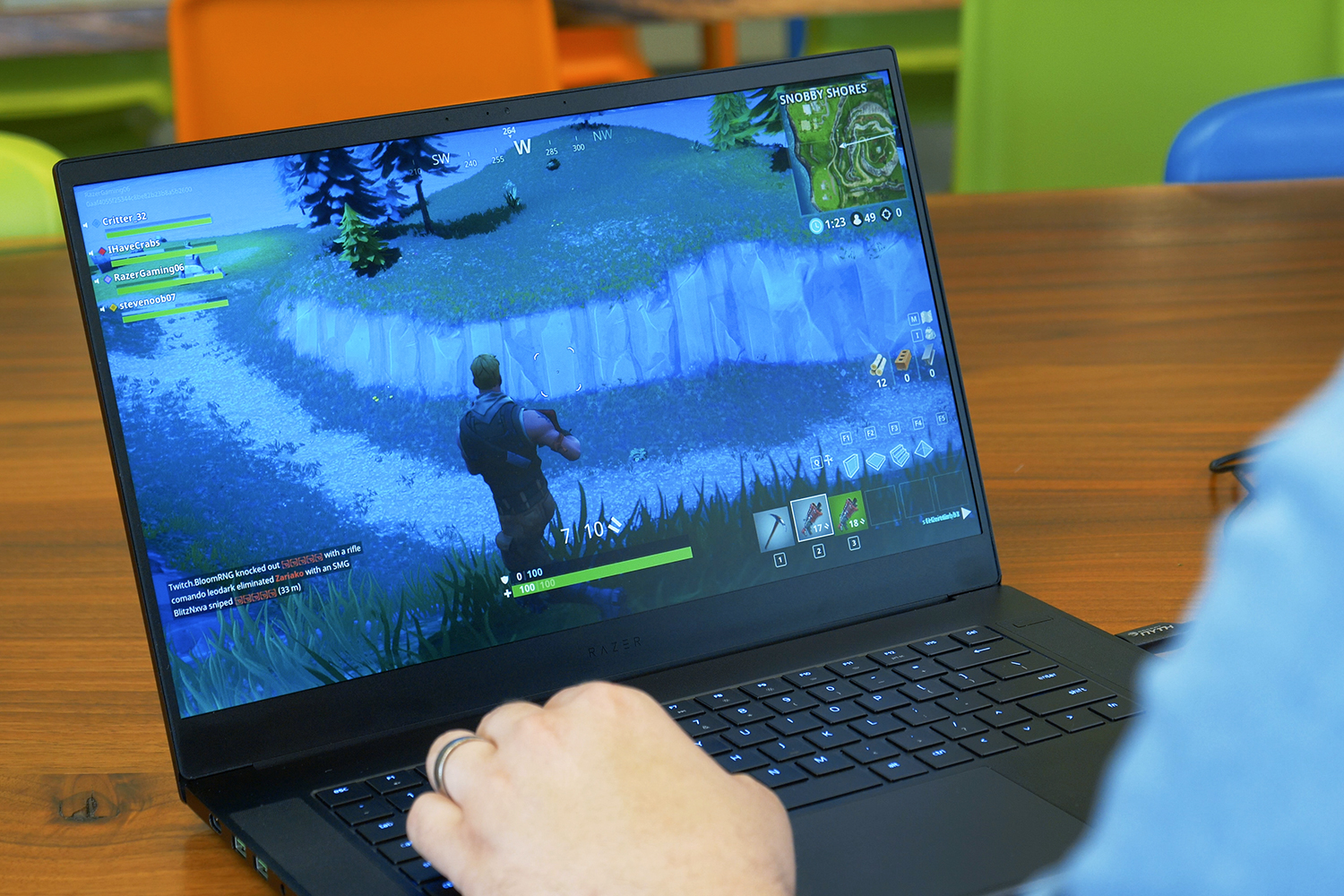
The Razer Blade features an 8th-generation Intel Core i7-8750H, which packs in six cores and twelve threads and runs at a hot 45 watts TDP. It’s a fast and furious CPU that churns through just about any task, from physics-oriented gaming to video editing and encoding. The PCIe solid-state drive (SSD) is also fast, and the RAM is optimized for performance as well. Finally, as a gaming notebook, the Razer Blade equips some powerful GPU options, with a choice between Nvidia GeForce GTX 1060 Max-Q and GeForce GTX 1070 Max-Q.
For its part, Microsoft equipped the Surface Book 2 with the latest U-Series Intel 8th-gen CPUs, topping out at the very fast Core i7-8650U. These quad-core processors ramp up the performance for demanding loads while reducing power and enhancing efficiency for lighter tasks. The company also gives a nod to gamers by jamming a GeForce GTX 1060 GPU into the keyboard base, which promises solid midrange gaming. The PCIe SSD provides quick access to data, and overall the Surface Book 2 performs well for a 2-in-1.
However, the Surface Book 2 has a flaw that sets it far behind the Razer Blade for gaming and the most GPU-intensive tasks. Namely, Microsoft ships the machine with a power supply that only provides 95 watts to the system, which is less than the CPU and GPU consume at full speed. Therefore, the battery is tapped to make up the difference, which causes throttling as battery capacity gets low enough and reduces the battery’s lifespan thanks to the extra charge cycles. The Razer Blade has no such problem, making it the far superior performer at the high end.
For gamers, we also need to note that while the Surface Book 2 offers a lovely 3:2 aspect ratio and high-resolution display with excellent contrast, the Razer Blade has an optional display with a fast 144Hz refresh rate to with 60Hz 1080p and 60Hz 4K UHD options. That makes Microsoft’s 2-in-1 better for productivity and the Razer Blade 15 better for gamers — which makes perfect sense given each machine’s true purpose.
Simply put, the Razer Blade blows the Surface Book 2 out of the water when it comes to sheer performance. If you need a portable powerhouse, then the Surface Book 2 isn’t the best option — at least not compared to the Razer Blade.
Portability
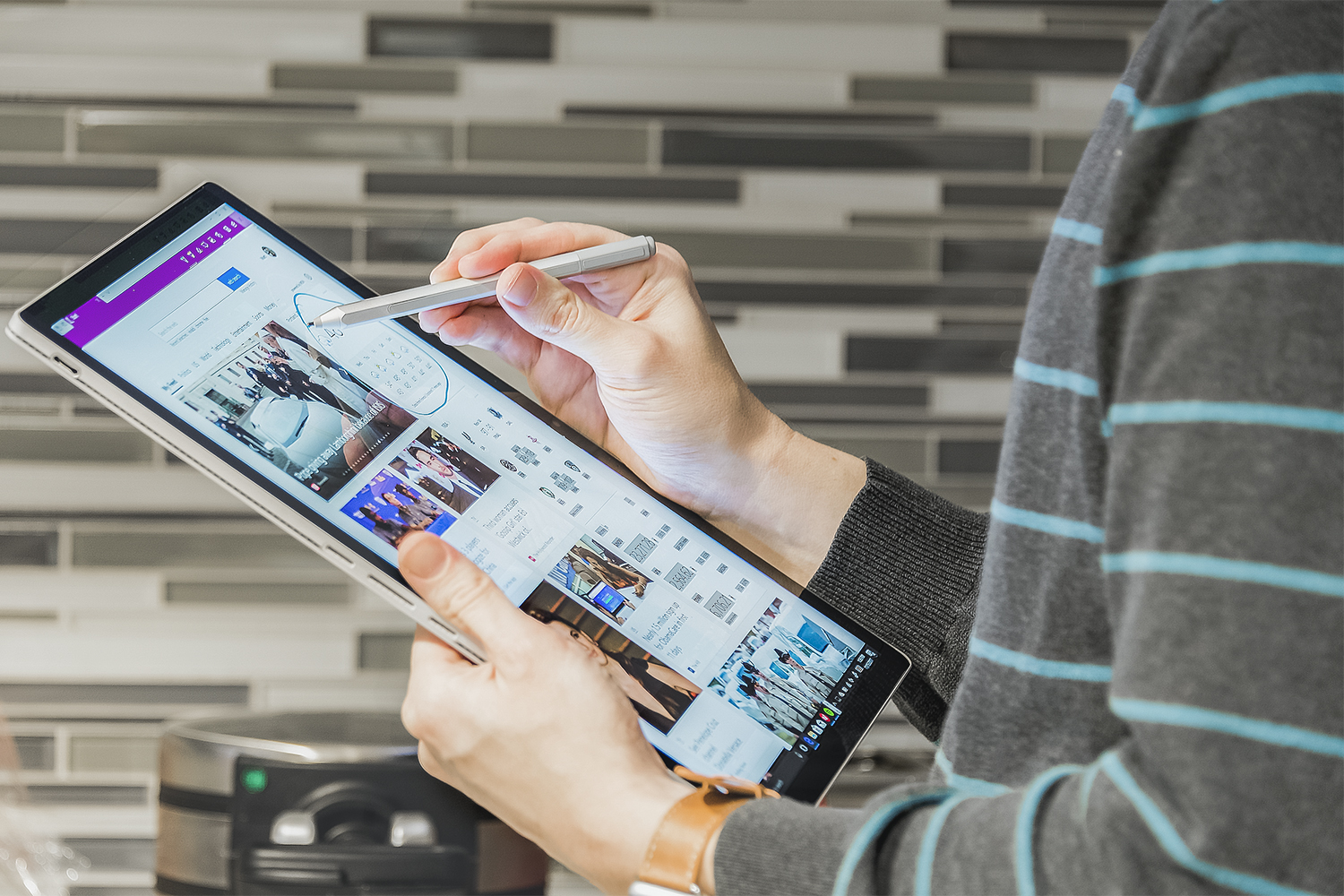
As we’ve already covered, the Razer Blade and 15-inch Surface Book 2 are equally heavy and just about equally as thin, although Microsoft’s notebook has a thicker rear end at the hinge. They’re both going to weigh you down a bit when you toss them into your backpack, but they’re both still quite portable compared to high-end notebooks and gaming machines of yesteryear. That makes them relatively easy to carry around given how much power is packed inside.
But portability is about more than just weight and thickness. It’s also about battery life, and this is where the Surface Book 2 gets a chance to shine. It squeezes in a whopping 90 watt-hours or so of battery capacity split between the tablet and the keyboard base, which compares to 80 watt-hours for the Razer Blade. But the Surface Book 2 also has a far more efficient CPU, and that translates into significantly improved longevity. We’re talking differences like over 20 hours of video looping compared to less than eight, and over 15 hours of web surfing versus less than five. If working away from a plug is important to you, then the Surface Book 2 is the superior option.
Conclusion

These are two different machines, and we normally wouldn’t compare a gaming notebook with a 2-in-1. But Microsoft equipped the Surface Book 2 with a gaming-level GPU, and so it invited the comparison. It also priced the machine at the high end of premium, starting at $2,500 for a Core i7-8560U, 16GB of RAM, and a 256GB SSD and ramping up to a whopping $3,300 for 1TB of storage. The Razer Blade 15 is also a pricey machine, starting at $1,900 for a Core i7-8750H, 16GB of
Which is better comes down to your intended purpose, though. For the average person we’d recommend the Surface Book 2, but if you care at all about being able to game, then the Razer Blade is what you want.
Editors' Recommendations
- Razer Blade 14 vs. Razer Blade 15: is smaller better?
- Should you buy the Surface Laptop Studio or wait for the Surface Laptop Studio 2?
- Can you use the Surface Pen with the Surface Laptop Studio 2?
- Microsoft Surface Pro 9 vs. Lenovo IdeaPad Duet 5i: which 2-in-1 is best?
- Razer quadruples the Blade 14’s USB speed with a simple software update

